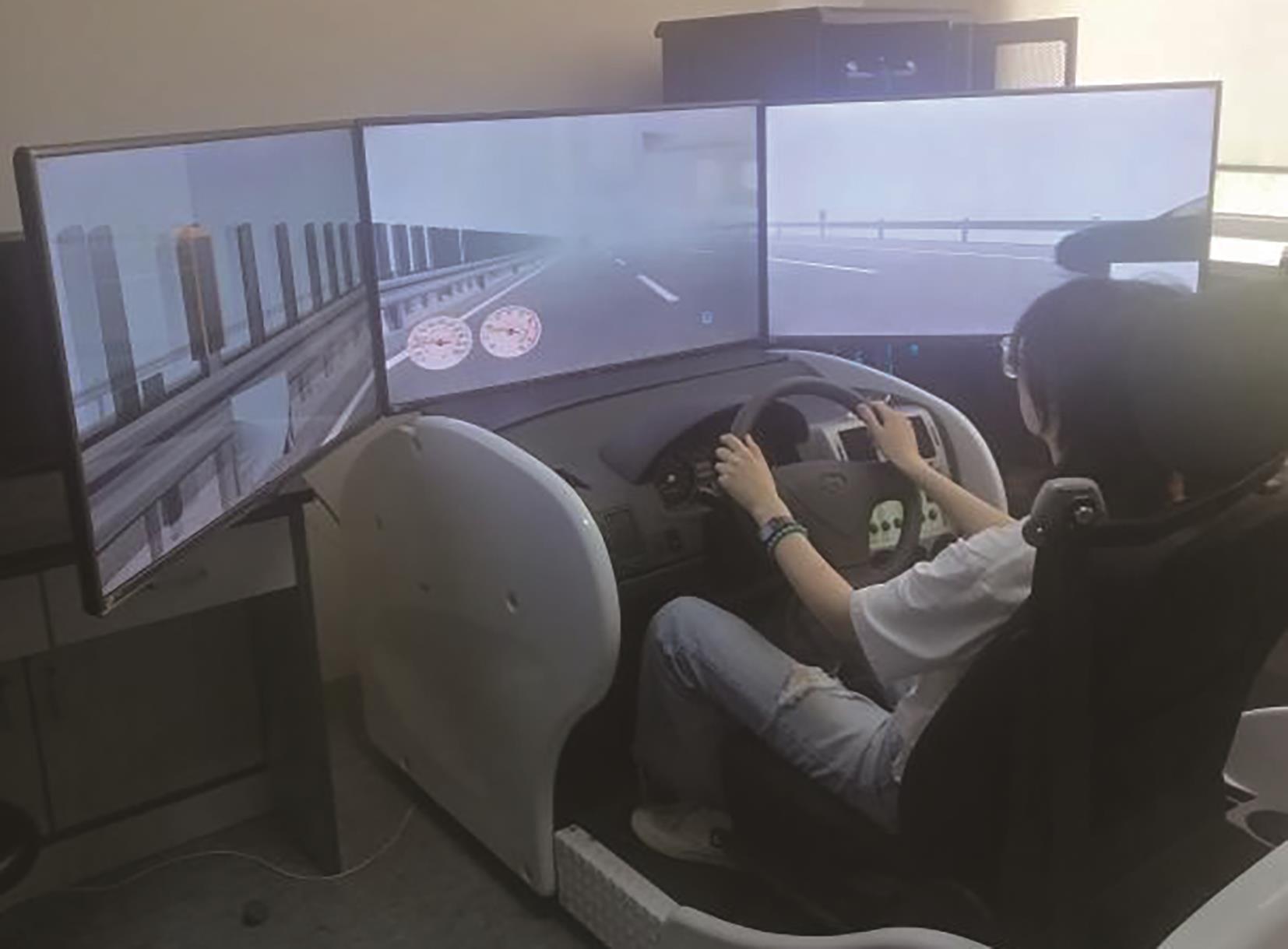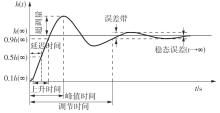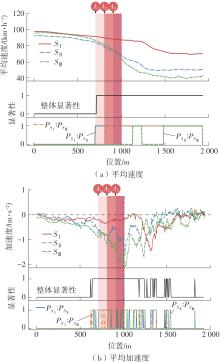Journal of South China University of Technology(Natural Science Edition) ›› 2024, Vol. 52 ›› Issue (1): 127-138.doi: 10.12141/j.issn.1000-565X.220765
• Traffic & Transportation Engineering • Previous Articles Next Articles
Evaluation of Utility and Optimal of Variable Speed Limit Value for Bridge in Foggy Condition
ZHANG Jianhua1 ZHAO Xiaohua1 OU Jushang2 LUAN Sen1 DAI Yibo1
- 1.Faculty of Architecture, Civil and Transportation Engineering, Beijing University of Technology, Beijing 100124, China
2.Key Laboratory of Intelligent Policing, Sichuan Police College, Luzhou 646000, Sichuan, China
-
Received:2022-11-19Online:2024-01-25Published:2023-04-23 -
Contact:欧居尚(1973-),男,教授,主要从事交通组织与控制、交通安全与执法技术研究。 E-mail:oujushang1973@163.com -
About author:张建华(1993-),男,博士生,主要从事交通运行安全研究。E-mail:zhangjianhua0728@outlook.com -
Supported by:the National Natural Science Foundation of China(52072012)
CLC Number:
Cite this article
ZHANG Jianhua, ZHAO Xiaohua, OU Jushang, et al.. Evaluation of Utility and Optimal of Variable Speed Limit Value for Bridge in Foggy Condition[J]. Journal of South China University of Technology(Natural Science Edition), 2024, 52(1): 127-138.
share this article
Table 3
Significant analysis results of driving parameters in different zone"
| 区域 | 指标 | 均值 | 标准差 | P | ||||
|---|---|---|---|---|---|---|---|---|
| SⅠ | SⅡ | SⅢ | SⅠ | SⅡ | SⅢ | |||
| 清晰区 | 平均速度 | 87.842 | 82.880 | 88.110 | 8.378 | 13.617 | 13.620 | 0.061 |
| 速度标准差 | 1.109 | 2.390 | 3.369 | 0.982 | 1.241 | 1.902 | 0.0002) | |
| 平均加速度 | -0.091 | -0.245 | -0.235 | 0.150 | 0.147 | 0.145 | 0.0002) | |
| 限速区 | 平均速度 | 73.033 | 76.787 | 10.961 | 15.595 | 0.0421) | ||
| 速度标准差 | 3.474 | 6.928 | 1.594 | 3.674 | 0.146 | |||
| 平均加速度 | -0.326 | -0.434 | 0.233 | 0.232 | 0.0291) | |||
| 雾区 | 平均速度 | 80.822 | 54.426 | 47.124 | 10.258 | 7.782 | 15.912 | 0.0001) |
| 速度标准差 | 5.830 | 6.465 | 6.864 | 4.362 | 3.190 | 5.456 | 0.652 | |
| 平均加速度 | -0.168 | -0.146 | -0.170 | 0.138 | 0.095 | 0.170 | 0.704 | |
Table 4
Significance analysis of evaluation indicators under different speed limit strategies"
| 评价层 | 指标 | 均值 | 标准差 | P | ||||
|---|---|---|---|---|---|---|---|---|
| SⅠ | SⅡ | SⅢ | SⅠ | SⅡ | SⅢ | |||
| 快速性 | -0.323 | -0.926 | -1.268 | 0.400 | 0.473 | 0.618 | 0.0002) | |
| 27.032 | 37.353 | 32.395 | 10.854 | 12.509 | 10.296 | 0.0011) | ||
| 稳定性 | -0.088 | -0.068 | -0.082 | 0.100 | 0.041 | 0.080 | 0.531 | |
| 84.060 | 163.650 | 297.580 | 90.990 | 190.380 | 211.366 | 0.0002) | ||
| 准确性 | 34.981 | 25.751 | 14.423 | 15.385 | 8.393 | 10.913 | 0.0002) | |
| 0.262 | 0.265 | 0.193 | 0.022 | 0.017 | 0.021 | 0.0021) | ||
Table 5
Level value ranges of variable speed limit evaluation indicators"
| 指标 | 现状值 | 取值范围 | ||||
|---|---|---|---|---|---|---|
| 等级1 | 等级2 | 等级3 | 等级4 | 等级5 | ||
| -1.268 | -3.75~-2.10 | -2.1~-1.35 | -1.35~-0.76 | -0.76~-0.20 | -0.20~0.45 | |
| 32.395 | 10.95~17.88 | 17.88~25.91 | 25.91~37.91 | 37.91~53.84 | 53.84~68.05 | |
| 6.597 | 1.38~4.94 | 4.94~8.56 | 8.56~12.35 | 12.35~17.71 | 17.71~22.81 | |
| 297.580 | 781.84~936.00 | 533.34~781.84 | 304.46~533.34 | 120.31~304.46 | 0.00~120.31 | |
| 14.423 | 8.15~18.78 | 18.78~30.07 | 30.07~40.72 | 40.72~53.22 | 53.22~68.88 | |
| 0.193 | 0.02~0.13 | 0.13~0.22 | 0.22~0.33 | 0.33~0.50 | 0.50~0.73 | |
| 1 | 交通运输部 .2020年交通运输行业发展统计公报[J].交通财会,2021(6):92-97. |
| Ministry of Transport of China .Statistical bulletin on the development of transportation industry in 2020[J].Finance & Accounting for Communications,2021(6):92-97. | |
| 2 | 黄冰娥,彭春露,陆键 .长江三角洲区域大型公路桥梁交通事故特征分析及安全对策[J].公路,2012(4):160-164. |
| HUANG Bing-e, PENG Chun-lu, LU Jian .Characteristic analysis and safety countermeasures of long span highway bridge traffic accidents of Yangtze River Delta[J].Highway,2012(4):160-164. | |
| 3 | 蔡晓禹,雷财林,彭博,等 .基于驾驶行为和信息熵的道路交通安全风险预估[J].中国公路学报,2020,33(6):190-201. |
| CAI Xiao-yu, LEI Cai-lin, PENG Bo,et al .Road traffic safety risk estimation based on driving behavior and information entropy[J].China Journal of Highway and Transport,2020,33(6):190-201. | |
| 4 | 王文治,石小法,张洪波,等 .杭州湾跨海大桥交通事故特征分析研究[J].公路,2016(5):152-156. |
| WANG Wen-zhi, SHI Xiao-fa, ZHANG Hong-bo,et al .Analysis and research on traffic accident characteristics of Hangzhou Bay Cross-sea Bridge[J].Highway,2016(5):152-156. | |
| 5 | 袁观虎 .大型桥梁交通运行状态影响评估模型研究[D].西安:长安大学,2015. |
| 6 | 于群力,陈徐均,江召兵,等 .不发生侧滑为指标的跨海大桥安全行车风速分析[J].解放军理工大学学报(自然科学版),2008,9(4):373-377. |
| YU Qun-li, CHEN Xu-jun, JIANG Zhao-bing,et al .Analysis of safety wind velocity of driving on sea-cross bridge based on target of no sideslip[J].Journal of PLA University of Science and Technology (Natural Science Edition),2008,9(4):373-377. | |
| 7 | CHEN Feng, PENG Haorong, MA Xiaoxiang,et al .Examining the safety of trucks under crosswind at bridge-tunnel section:a driving simulator study[J].Tunnelling and Underground Space Technology,2019,92:103034/1-9. |
| 8 | WANG Kun, ZHANG Weihua, FENG Zhongxiang,et al .Reasonable driving speed limits based on recognition time in a dynamic low-visibility environment related to fog:a driving simulator study[J].Accident Analysis and Prevention,2021,154:106060/1-8. |
| 9 | 蒋德成 .区域高速公路网动态诱导与限速标志配置方法研究[D].西安:长安大学,2015. |
| 10 | MARTÍNEZ I, JIN W L .Optimal location problem for variable speed limit application areas[J].Transportation Research Part B:Methodological,2020,138:221-246. |
| 11 | 张珊,张存保,李薇 .雾天环境下高速公路可变限速控制方法研究[J].交通信息与安全,2018,36(2):47-53. |
| ZHANG Shan, ZHANG Cunbao, LI Wei .A traffic control method for freeways using variable speed limits under fogy weather[J].Journal of Transport Information and Safety,2018,36(2):47-53. | |
| 12 | 孙长乐,高宏岩 .基于修正因子的雾天可变限速控制交通流模型[J].科学技术与工程,2020,20(10):4016-4021. |
| SUN Chang-le, GAO Hong-yan .Traffic model with variable speed limit control based on correction factor under foggy weather condition[J].Science Technology and Engineering,2020,20(10):4016-4021. | |
| 13 | ZHAO X, XU W, MA J,et al .Effects of connected vehicle-based variable speed limit under different foggy conditions based on simulated driving[J].Accident Analysis & Prevention,2019,128:206-216. |
| 14 | KAPTEIN N A, THEEUWES J, van der HORST R .Driving simulator validity:some considerations[J].Transportation Research Record,1996,1550(1):30-36. |
| 15 | SHANGGUAN Q, FU T, LIU S .Investigating rear-end collision avoidance behavior under varied foggy weather conditions:a study using advanced driving simulator and survival analysis[J].Accident Analysis & Prevention,2020,139:105499/1-14. |
| 16 | 赵晓华,陈雨菲,李海舰,等 .面向人因的车路协同系统综合测试及影响评估[J].中国公路学报,2019,32(6):248-261. |
| ZHAO Xiao-hua, CHEN Yu-fei, LI Hai-jian,et al .Comprehensive test and impact assessment for human factors of connected vehicle system[J].China Journal of Highway and Transport,2019,32(6):248-261. | |
| 17 | ZHAO X, CHEN Y, LI H,et al .A study of the compliance level of connected vehicle warning information in a fog warning system based on a driving simulation[J].Transportation Research Part F:Traffic Psychology and Behaviour,2021,76:215-237. |
| 18 | 龚鸣 .驾驶模拟器视认特性的有效性研究[D].北京:北京工业大学,2011. |
| 19 | WU Y P, ZHAO X H, CHEN C,et al .Modeling the influence of chevron alignment sign on young male driver performance:a driving simulator study[J].Accident Analysis and Prevention,2016,95:479-486. |
| 20 | 赵晓华,房瑞雪,毛科俊,等 .基于生理信号的驾驶疲劳声音对策有效性实验[J].西南交通大学学报,2010,45(3):457-463. |
| ZHAO Xiaohua, FANG Ruixue, MAO Kejun,et al .Test on effectiveness of sound as countermeasure against driving fatigue based on physiological signals[J].Journal of Southwest Jiaotong University,2010,45(3):457-463. | |
| 21 | WU Y, ABDEL-ATY M, PARK J,et al .Effects of real-time warning systems on driving under fog conditions using an empirically supported speed choice mode-ling framework[J].Transportation Research Part C:Emerging Technologies,2018,86:97-110. |
| 22 | BIAN Y, ZHANG X, WU Y,et al .Influence of prompt timing and messages of an audio navigation system on driver behavior on an urban expressway with five exits[J].Accident Analysis & Prevention,2021,157:106155/1-15. |
| 23 | 张驰,任士鹏,王博,等 .长大下坡路段货车运行速度特性及预测[J].华南理工大学学报(自然科学版),2022,50(3):38-49. |
| ZHANG Chi, REN Shipeng, WANG Bo,et al .Speed characteristics and prediction of trucks on long and steep downgrade sections[J].Journal of South China University of Technology(Natural Science Edition),2022,50(3):38-49 | |
| 24 | 胡寿松 .自动控制原理[M].4版.北京:科学出版社,2001. |
| 25 | 陈晨 .城市道路驾驶员生态驾驶行为评估方法研究[D].北京:北京工业大学,2016. |
| 26 | 赵晓华,鞠云杰,李佳,等 .基于驾驶行为和视觉特性的长大隧道突起路标作用效果评估[J].中国公路学报,2020,33(6):29-41. |
| ZHAO Xiao-hua, JU Yun-jie, LI Jia,et al .Evaluation of the effect of PRMs in extra-long tunnels based on driving behavior and visual characteristics[J].China Journal of Highway and Transport,2020,33(6):29-41. | |
| 27 | XIAO Q, HE R, YU J .Evaluation of taxi carpooling feasibility in different urban areas through the K-means matter-element analysis method[J].Technology in Society,2018,53:135-143. |
| [1] | GAO longkai, ZHAO Xiaohua, OU Jushan, et al. Optimization Design Method of the Stereoscopic Compound Expressway Sign System Based on Unity3D [J]. Journal of South China University of Technology(Natural Science Edition), 2024, 52(5): 20-30. |
| [2] | ZHAO Xiaohua, DONG Wenhui, LI Jia, et al. Influence Characteristics and Action Mechanism of Tunnel Traffic Signs Based on Driving Behavior [J]. Journal of South China University of Technology(Natural Science Edition), 2023, 51(4): 88-100. |
| [3] | LUO Yutao, GAO Qiang. Traffic Sign Detection Based on Channel Attention and Feature Enhancement [J]. Journal of South China University of Technology(Natural Science Edition), 2023, 51(12): 64-72. |
| [4] | CHEN Xiaohong, HU Fang . Interval Optimization Model of Signal Control at Intersection Based on Possibility Degree [J]. Journal of South China University of Technology(Natural Science Edition), 2022, 50(10): 29-40. |
| [5] | DAI Zhou, WANG Gang, YAN Yingjie, et al. Evaluation on the Comprehensive Energy Efficiency of Power GridEnterprise Material Quality Control System Based on Combination#br# Weighting and Fuzzy Comprehensive Evaluation Method [J]. Journal of South China University of Technology (Natural Science Edition), 2020, 48(7): 47-54. |
| [6] | LIU Xiao-kang YANG Feng GAO Jiao LU Long-sheng. Fuzzy Comprehensive Quality Evaluation of Chopped Carbon Fiber Based on Entropy Weight [J]. Journal of South China University of Technology (Natural Science Edition), 2016, 44(6): 59-64. |
| [7] | LIU Gang MA Hao-yu ZHANG Xian. Application of Improved Analytic Hierarchy Process on Evaluation of Lightning Protection in Distribution Networks [J]. Journal of South China University of Technology (Natural Science Edition), 2016, 44(4): 71-76,100. |
| [8] | Ma Ming-lei Ma Ru-jin Chen Ai-rong. Occurrence Probability Model of Bridge Fires Caused by Vehicles [J]. Journal of South China University of Technology (Natural Science Edition), 2015, 43(12): 133-140. |
| [9] | Yang Zhao-sheng Qu Xin Lin Ci-yun Bing Qi-chun Gong Bo-wen. Traffic Signal Optimization Method Considering Low Emissions and Short Delay [J]. Journal of South China University of Technology (Natural Science Edition), 2015, 43(10): 29-34,41. |
| [10] | Gong Jin-ke Du Jia E Jia-qiang Liu Heng-yu Zhang Fu-jie. Fuzzy Comprehensive Evaluation of Microwave Regeneration for Diesel Particulate Filter [J]. Journal of South China University of Technology(Natural Science Edition), 2012, 40(5): 30-34,40. |
| [11] | Jiang Jin-liang Yuan Jin-jing Ouyang Sen. Fuzzy Comprehensive Evaluation of Power Quality Based on Improved Membership Function [J]. Journal of South China University of Technology(Natural Science Edition), 2012, 40(11): 107-112. |
| [12] | Xia Xin-hai Xu Lun-hui. A Multi-Interaction History Learning Approach for Coordination of Urban Intersection Agents [J]. Journal of South China University of Technology (Natural Science Edition), 2011, 39(3): 114-119. |
| [13] | . Determination Method of Critical Traffic Volume for Signal Setting at T-Intersections [J]. Journal of South China University of Technology (Natural Science Edition), 2011, 39(10): 105-110. |
| [14] | Li Hong-ping Pei Yu-long. Fuzzy Comprehensive Evaluation of Service Level of Expressway System [J]. Journal of South China University of Technology (Natural Science Edition), 2009, 37(7): 26-30,41. |
| [15] | Sun Ji-feng Nie Wei-guo Su Ze-jian . Correlative Techniques of the Training System for Ship Handling Based on Virtual Reality [J]. Journal of South China University of Technology(Natural Science Edition), 2004, 32(2): 67-71. |
| Viewed | ||||||
|
Full text |
|
|||||
|
Abstract |
|
|||||


















